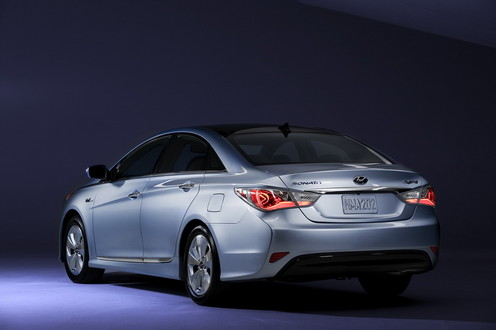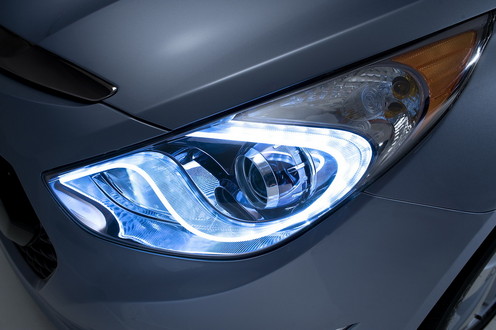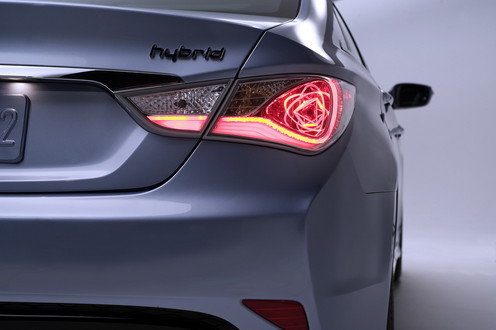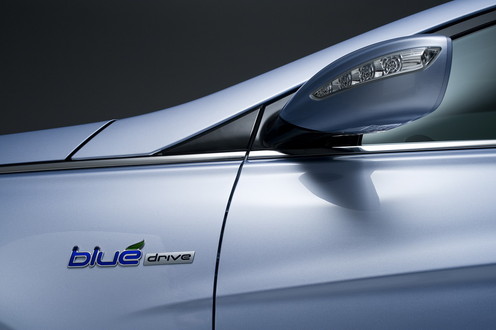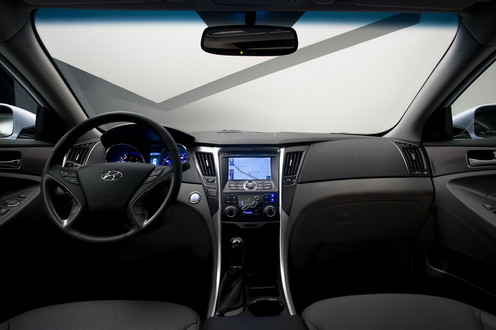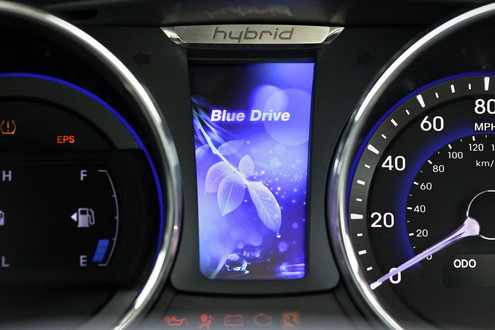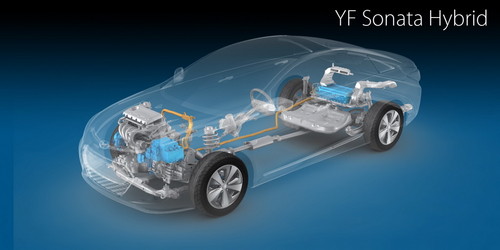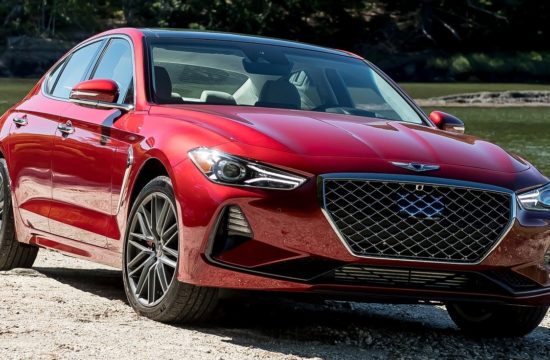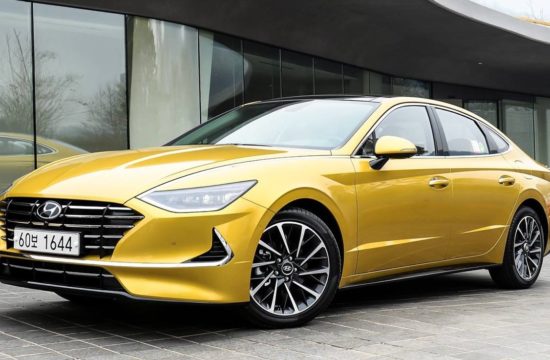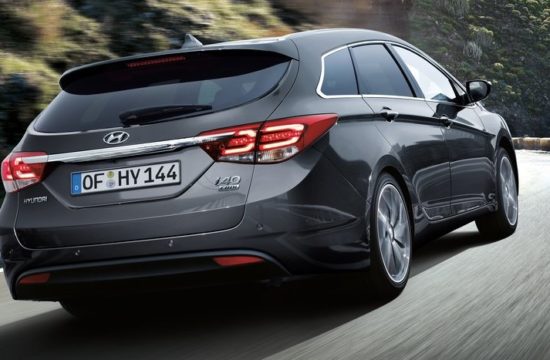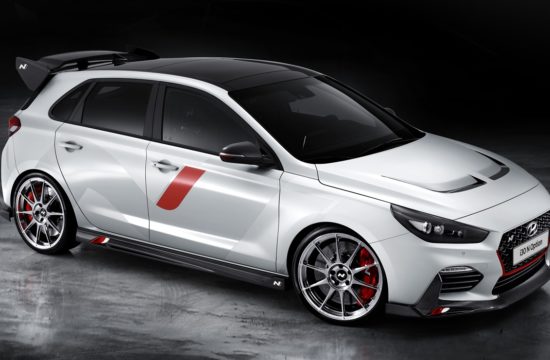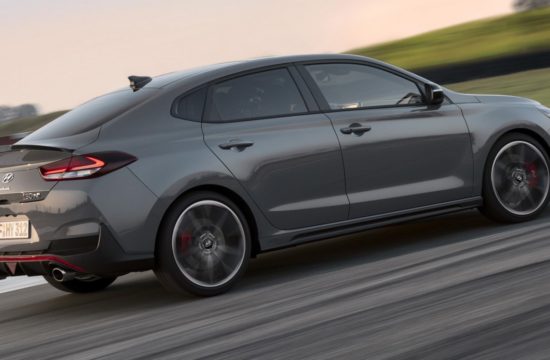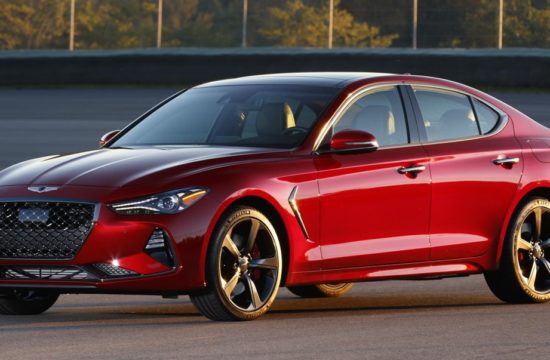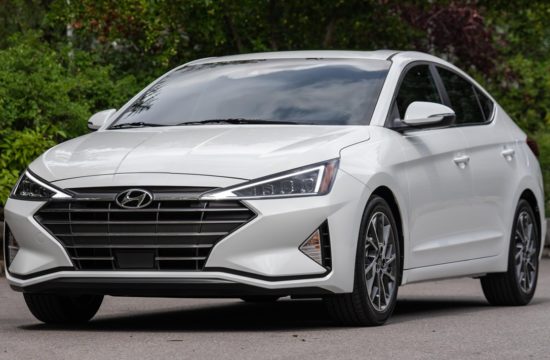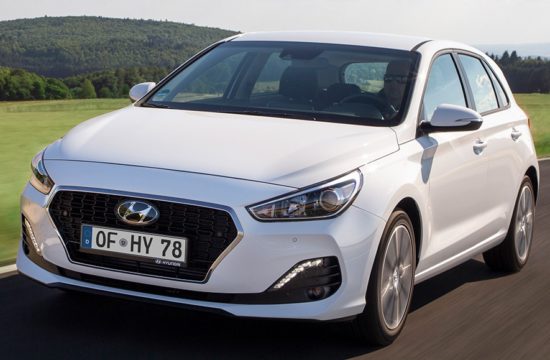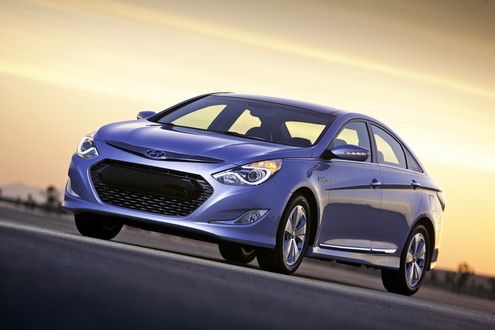
Along with the new Sonata 2.0T, Hyundai also revealed the all-new Sonata Hybrid Blue Drive at the New York Auto Show. The hybrid variant of this amazing mid-size sedan comes with a new face totally distinguishable from normal models, and it features a sophisticated hybrid powertrain with combined output of 209 hp and average fuel consumption of 39 mpg.
Sonata Hybrid’s Blue Drive system consists of a 2.4-liter Theta II gasoline engine with 169 hp and 156 lb-ft. of torque, and a 30Kw electric motor. The car only comes with a six-speed automatic gearbox which delivers the total 209 horsepower and 195 lb-ft of torque to the front wheels.
With its total weight of 3,457 pounds, the Sonata Hybrid manages 37 mpg city and 39 mpg highway. It also can be as fast as 62mph while being in pure electric mode.
The car features some special features inside and out. On the outside it comes with unique:
* Headlights and taillights
* Aerodynamic bumper fascias
* Aerodynamic rocker panels
* Bold hexagonal grille
* Eco-spoke wheels
* Air dam and aero side sills
* Hybrid Blue Drive badging
* Exclusive hybrid paint color
Inside the cabin you get:
* Supervision cluster with eco-display options
* Unique interior color choice
* Unique seat patterns
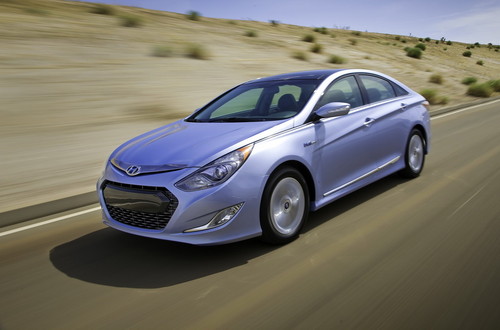
HYUNDAI’S HYBRID BLUE DRIVE ARCHITECTURE
Hyundai’s Hybrid Blue Drive is a proprietary parallel hybrid drive system that runs on the already fuel-efficient 2.4-liter Theta II engine (169 horsepower at 6,000 rpm and 156 lb-ft of torque at 4,500 rpm) mated to a 6-speed automatic transmission and a 30kW (151 lb-ft) electric motor for maximum fuel economy. Hyundai’s Hybrid Blue Drive has an all-electric mode and a parallel drive mode. This means the wheels are turned by power coming directly from the gasoline engine, or the electric motor, or both together, as conditions demand. This parallel hybrid drive architecture will serve as the foundation for future hybrid drive vehicles to be developed by Hyundai.
In the Hyundai Hybrid Blue Drive system, the Theta II with multi-port fuel injection (MPI) operates on an Atkinson Cycle. Atkinson Cycle is a type of internal combustion engine strategy designed to dramatically increase fuel efficiency through changes in compression and power strokes in the four stroke engine. It is typically only used in hybrid systems where the high-torque electric motor boosts low-end power, which is traded off for internal combustion engine efficiency. By combining the electric motor and the Atkinson Cycle engine, the Hybrid Blue Drive system delivers best-in-class highway hybrid efficiency.
To further improve fuel economy, all of the Theta II major driveline and cooling system components have been optimized to reduce friction, while the crankcase has been filled with low friction oil. Hybrid Power Control (HPC) management software automatically shuts off the engine when the vehicle comes to a halt, cutting emissions to zero. When pressure is reapplied to the accelerator pedal, the Hybrid Starter Generator (HSG) automatically restarts the engine. This control strategy assures that maximum efficiency is achieved during gentle acceleration and greater power is immediately available during full acceleration. During deceleration, braking regeneration comes into play. Sonata Hybrid also features “smart brake” technology in which braking input over-rides accelerator pedal input.
The high-tech, all-aluminum, 16-valve engine also features Continuously Variable Valve Timing (CVVT) on both camshafts and newly developed engine components to reduce friction. This optimized Theta II engine achieves 10 percent better fuel consumption over a conventional Theta II engine.
Hyundai Hybrid Blue Drive uses the company’s proprietary 6-speed automatic transmission rather than a conventional hybrid’s CVT. Hyundai’s strategy involves an adaptation of the modular 6-speed transmission, replacing the torque converter with an electric motor and high-efficiency oil pump. This technique uses a traditional step-shift 6-speed transmission rather than a CVT to provide a more traditional shift feel that is preferred by customers and sometimes artificially replicated in CVT applications. This saves on cost, making the Hyundai Hybrid Blue Drive system a better value. It is a more robust and elegantly simple solution to a complicated engineering challenge.
Fuel efficiency improvements are evident throughout Sonata Hybrid. For example, the top three gear ratios in the transmission have been extended to ensure the engine runs at lower RPMs, the electric motor-assisted steering system reduces demands on the engine, and low resistance tires further optimize fuel economy.
* Hybrid Blue Drive is made up of the following major components:
* An efficient 30kW electric motor delivering 151 lb-ft of torque
* A regenerative braking system
* An integrated starter generator that enables the engine to turn off at stops and restart automatically under acceleration
* A breakthrough lithium polymer battery package, with 5.3 Ah of capacity at 270 volts
* A fuel-efficient Theta II 2.4-liter engine
* 6-speed automatic transmission with an improved efficiency electric oil pump
* Weight-efficient architecture coupled with a low drag coefficient (.25 Cd target)
* Electric air conditioning compressor
* Hybrid power control unit
LITHIUM POLYMER BATTERY TECHNOLOGY
Sonata’s hybrid system stores its electrical charge in a 270V lithium polymer rechargeable battery (5.3Ah/270V) that surpasses existing nickel-metal hydride and pending lithium-ion applications. Lithium polymer batteries are more durable and space-efficient than other hybrid batteries. They are also more weight-efficient. The Sonata Hybrid’s battery pack weighs just 95.9 pounds versus the Camry Hybrid’s 123.9 pounds. The compact battery pack resides in the forward portion of the trunk to maximize cargo space.
Lithium Polymer Batteries vs. Nickel-Metal Hydride Batteries
Compared with nickel-metal hydride batteries, lithium polymer batteries deliver the same power with 20-30 percent less weight, 40 percent less volume and 10 percent greater efficiency over the nickel-metal hydride batteries found in today’s hybrids. Lithium polymer batteries offer 1.7 times more energy density than nickel-metal hydride batteries, allowing Hyundai engineers to devote less space and weight to the battery pack. Lithium polymer batteries hold their charge 1.25 times longer. Lithium polymer batteries also are more resistant to changes in temperature, which improves cycle life. Additionally, lithium polymer’s self-discharge rate is less than a third of a nickel-metal hydride battery.
Lithium Polymer Batteries vs. Lithium-ion Batteries
Lithium-polymer has significant advantages over lithium-ion, including higher energy density and lower manufacturing costs. Lithium polymer is more resistant to physical damage and can handle more charge-discharge cycles before storage capacity begins to degrade. Lithium polymer technology also offers significant advantages in thermal robustness and safety.
A key difference between traditional lithium ion batteries and Hyundai’s lithium polymer battery solution is the overall packaging of the cell – the anode, the cathode, the electrolyte, and the encasement material. Traditional lithium-ion batteries, like those found in laptops, use what’s known as the 18650 cell format. In this format, each mass-produced cell is 18 mm. in diameter and 65 mm. tall, which is a bit larger than a “AA” battery. Each of these small metal cylinders is filled with a liquid electrolyte that facilitates the movement of lithium ions across anode and cathode, creating the battery current.

